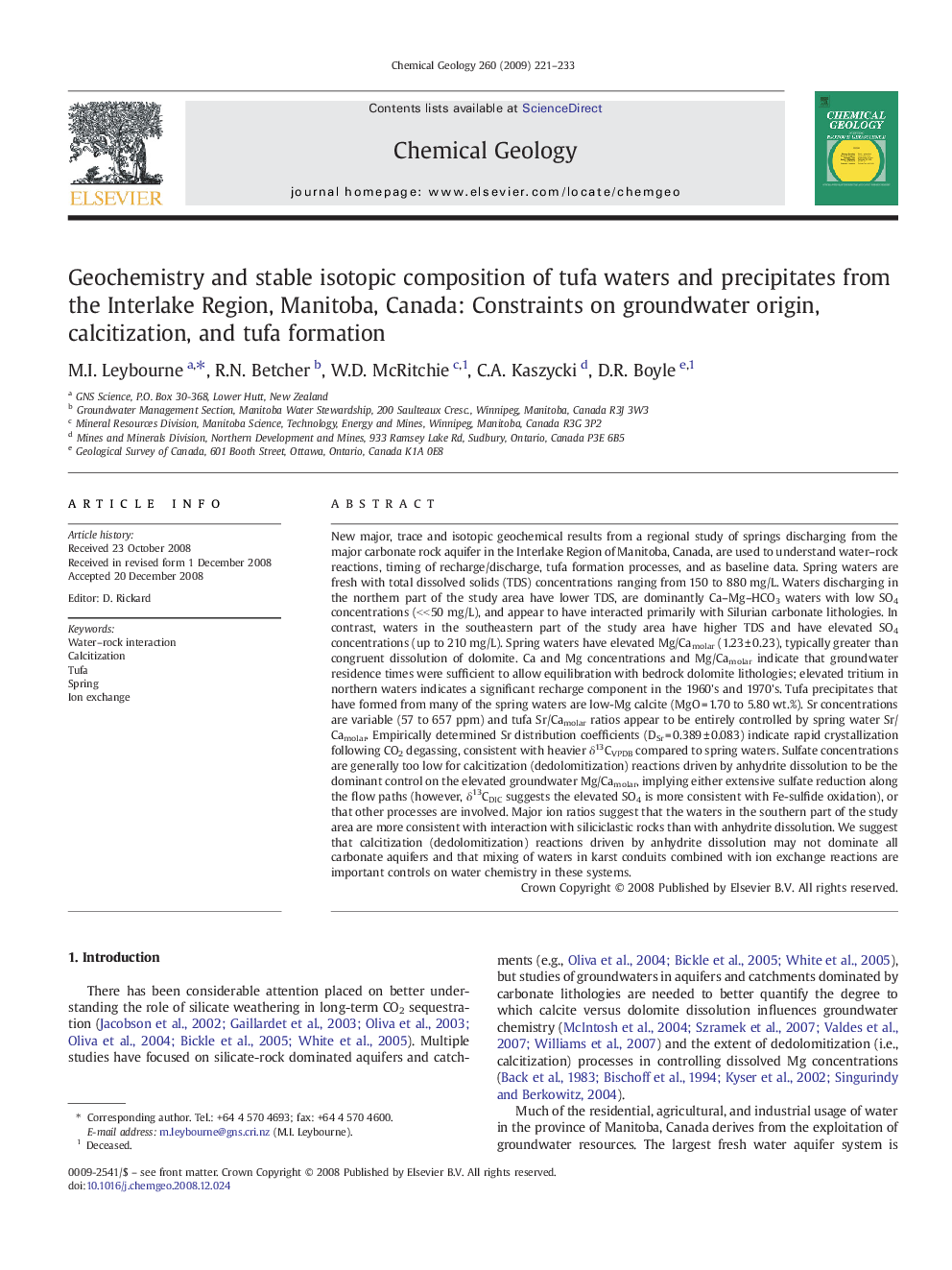| کد مقاله | کد نشریه | سال انتشار | مقاله انگلیسی | نسخه تمام متن |
|---|---|---|---|---|
| 4700385 | 1637711 | 2009 | 13 صفحه PDF | دانلود رایگان |

New major, trace and isotopic geochemical results from a regional study of springs discharging from the major carbonate rock aquifer in the Interlake Region of Manitoba, Canada, are used to understand water–rock reactions, timing of recharge/discharge, tufa formation processes, and as baseline data. Spring waters are fresh with total dissolved solids (TDS) concentrations ranging from 150 to 880 mg/L. Waters discharging in the northern part of the study area have lower TDS, are dominantly Ca–Mg–HCO3 waters with low SO4 concentrations (<< 50 mg/L), and appear to have interacted primarily with Silurian carbonate lithologies. In contrast, waters in the southeastern part of the study area have higher TDS and have elevated SO4 concentrations (up to 210 mg/L). Spring waters have elevated Mg/Camolar (1.23 ± 0.23), typically greater than congruent dissolution of dolomite. Ca and Mg concentrations and Mg/Camolar indicate that groundwater residence times were sufficient to allow equilibration with bedrock dolomite lithologies; elevated tritium in northern waters indicates a significant recharge component in the 1960's and 1970's. Tufa precipitates that have formed from many of the spring waters are low-Mg calcite (MgO = 1.70 to 5.80 wt.%). Sr concentrations are variable (57 to 657 ppm) and tufa Sr/Camolar ratios appear to be entirely controlled by spring water Sr/Camolar. Empirically determined Sr distribution coefficients (DSr = 0.389 ± 0.083) indicate rapid crystallization following CO2 degassing, consistent with heavier δ13CVPDB compared to spring waters. Sulfate concentrations are generally too low for calcitization (dedolomitization) reactions driven by anhydrite dissolution to be the dominant control on the elevated groundwater Mg/Camolar, implying either extensive sulfate reduction along the flow paths (however, δ13CDIC suggests the elevated SO4 is more consistent with Fe-sulfide oxidation), or that other processes are involved. Major ion ratios suggest that the waters in the southern part of the study area are more consistent with interaction with siliciclastic rocks than with anhydrite dissolution. We suggest that calcitization (dedolomitization) reactions driven by anhydrite dissolution may not dominate all carbonate aquifers and that mixing of waters in karst conduits combined with ion exchange reactions are important controls on water chemistry in these systems.
Journal: Chemical Geology - Volume 260, Issues 3–4, 30 March 2009, Pages 221–233